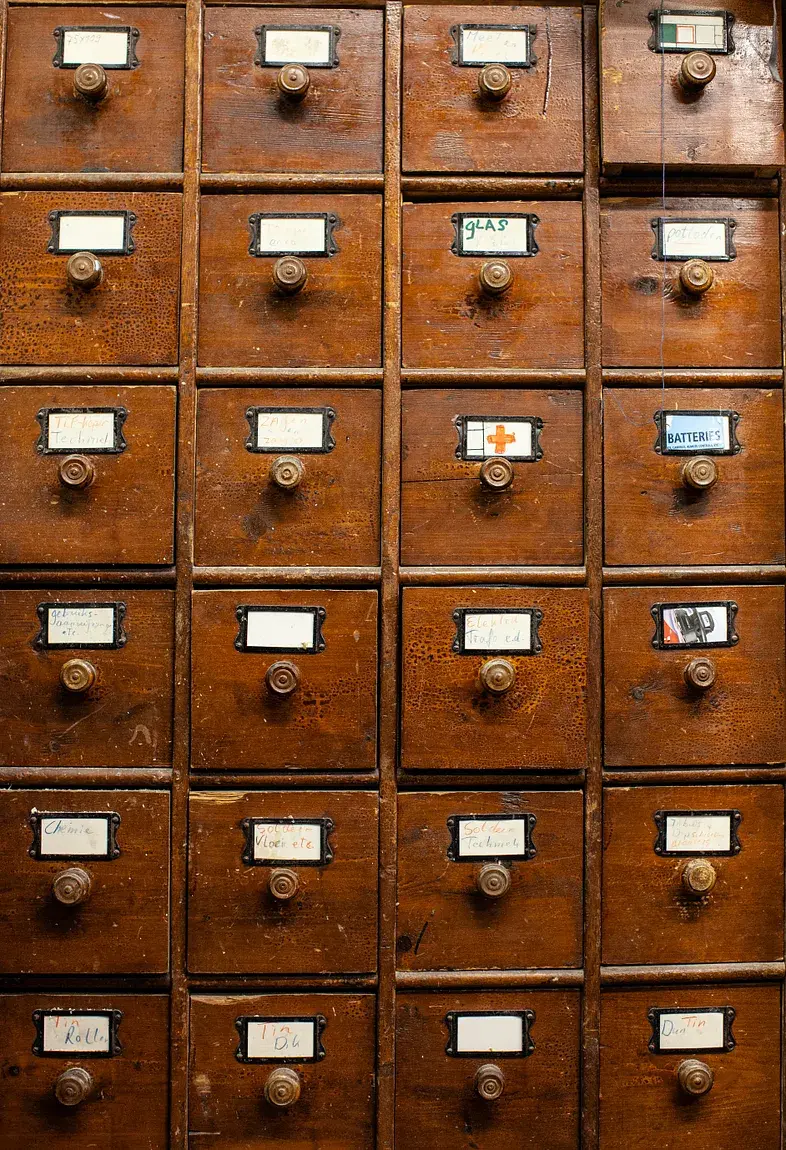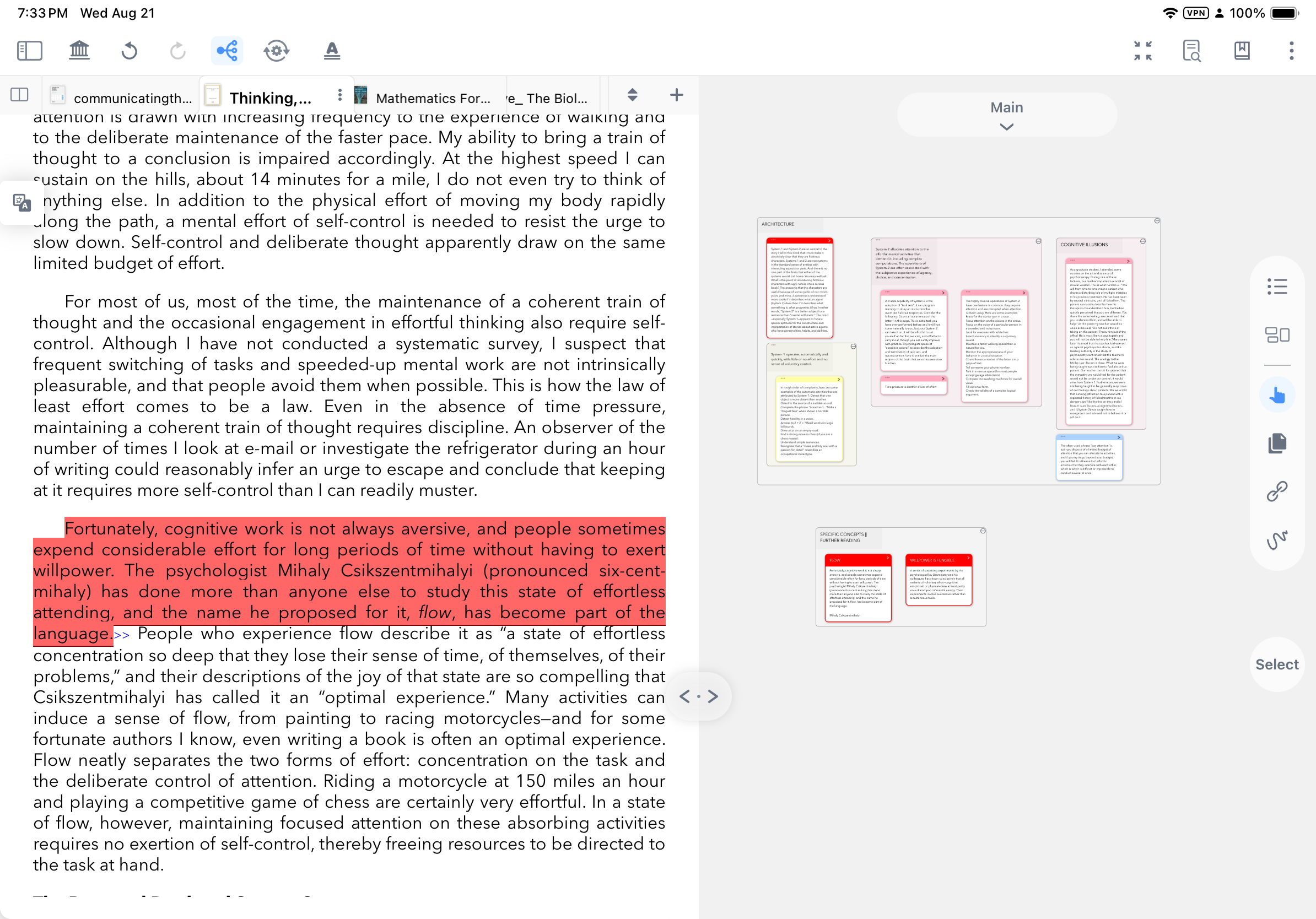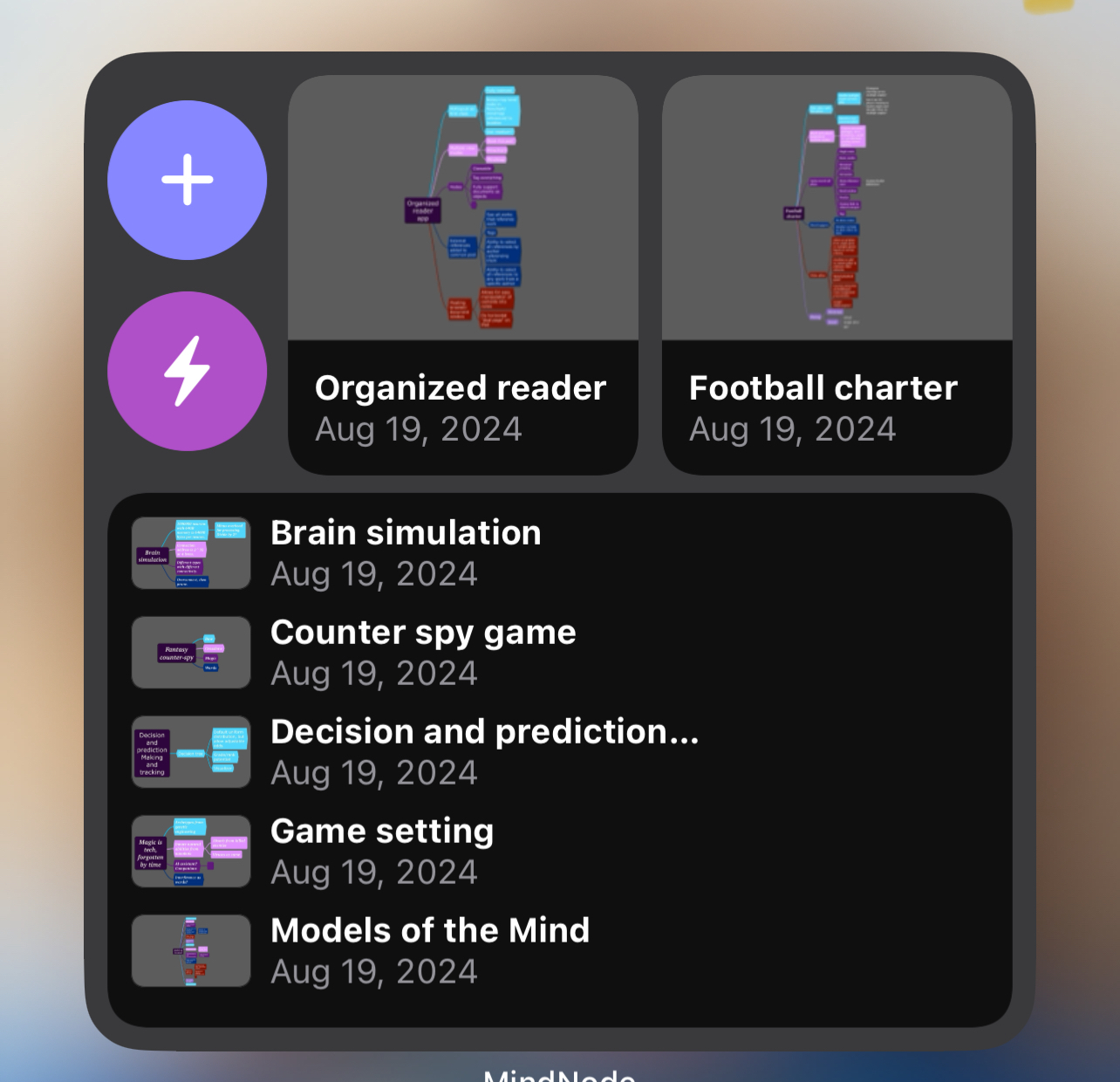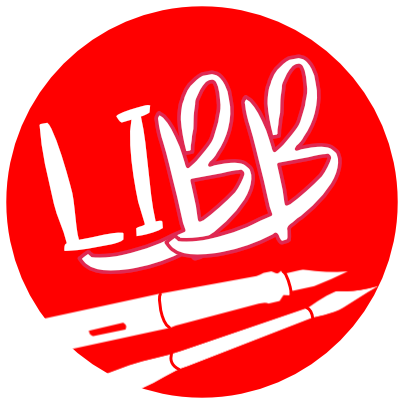I’m rediscovering the use of a blue SAD light for productive works/study time.
Also Newton’s cradle is good for setting a beat
As much as I can, I will use analog tools instead of digital.
- I keep a paper agenda.
- My to-do is paper too.
- I draft all my papers longhand.
- I sketch using pen and paper.
- I do all me y research using an analog Zettelkasten (a fancy word to designate a large pile of index cards stored in boxes). I’ve tried using the digital modernized version of that Zettelkasten (a concept that was formalized between the 1960-90s) using an app like Obsidian but it absolutely did not work for me. Paper suits me best.
No notifications, no update/upgrade, no recharging, no bugs and no temptation to go check something online every few seconds. 100% focus.
I’m not saying that analog is better than digital, just that it works best for me and since the better I work the faster I do the work and the less I have to work. The happier I am ;)
Wow!
I agree with all your bullet points except the last one.
How do you store and search a paper Zettlekasten? How do you update it?
I use obsidian for that and I am not sure a paper version would be economically sane for me. I would need tons of probably expensive small papers and one of those beautiful drawers furniture they used in the 60s.
Congratulations this is impressive.
First, thx.
Then, to answer your questions:
The Zettelkasten was devised to be constantly updated and searched and linked, be it analog or digital. My index is the key entry point, next to the my many bibliographical and authors cards and then I simply follow the links from one card to the other(s).
I can easily update any entry by adding more cards to it, with a sub-digit ID linking it to its parent.
I’m not a huge fan of videos, but you could do worse (much worse) than watch a few on Scott Scheper’s channel (https://www.youtube.com/@scottscheper/videos) the only real downside imho, beside the sheer amount of videos, is how much he insists on being hostile to digital. Even though I’m an analog user myself I find his constant attacks tiring (not necessarily all wrong, but tiring) and counter-productive. The same with his book (a really excellent understanding of what an analog Zettel is and how one could use it, with way too much anti-digital remarks). A more neutral and not less interesting reading would be Bob Doto ‘A system for writing’ (https://bobdoto.computer/) — reading it this very moment and not yet finished, but I like what I’ve been reading so far. The kind of book I would likely offer to a newcomer.
As for cost. There are many options to reduce it to barely nothing (say, much less than the cost of a cloud subscription to host your files for a few decades):
- You may not use index cards but standard paper. Much cheaper. And it has another advantage: it will eat less space in your boxes since standard paper is thinner than index cards. For years, I was reusing the back of letters and documents, the back of my drafts and so on I cut to size (A6, aka 4x6 in the USA). I made thousands of cards for cheap, if not for free. My only expense was to buy a (used, cheap) office paper cutter (one of those guillotine-like thingy with a large blade that can easily cut 20+ sheets at once). So it was really quick and neat to make a bunch of new ‘cards’ from my recycled A4 sheets.
- You may buy index cards in bulk or even second hand. I’ve recently purchased 10.000 A6 (4x6) cards brand new still wrapped in packs of 100 from a shop that was closing down for less than… 40$, shipping included.
For storage, I have yet to find a decent filing cabinet. Living in France, I don’t have access to the variety of new cabinets you have in the USA, or only at absurdly expensive prices. And used 4x6 filing cabinets are not that common. So, for the most part I’ve been using a (high tech) mix of shoe boxes (they work surprisingly well) and of those office index card boxes (plastic or metal boxes with a removable lid and optional separators). Both are ugly as fuck, that’s for sure, but at least they do their job. One day, hopefully, I will get my hand on one of those nice and well-made cabinet :p
Edit: typos (part thx to Apple’s autocorrect moronic decisions, part because I just suck at English ;)
Ah oui t’es un jlailu toi aussi, j’avais pas remarqué.
Thanks for your answers, I’ll have a look at the videos. I do love my obsidian Zettel for one useless function: The graph view that looks like a brain with synapses etc 🤷🏻♂️
Ah oui t’es un jlailu toi aussi, j’avais pas remarqué.
Neither did I realize you were too ;)
I do love my obsidian Zettel for one useless function: The graph view that looks like a brain with synapses etc 🤷🏻♂️
Obsidian has a lot of qualities. It’s just that… I find it was incredibly overwhelming when I first installed it. I spend an entire week just getting familiar with it and learning its base procedures. In comparison, getting familiar with a pile of index cards and a fountain pen took me… a few seconds.
And then everything is flat on a screen, and intangible and stuck withing that limited screen. You can’t touch it, you can’t easily put it in whatever order — or disorder — you fancy or drop it wherever you want. I like to spread my cards on a couple tables and then mix them as ideas and connections start to fuse. I also enjoy flipping through those cards like I would flip through the pages of a book (it’s generally when the most interesting surprises will happen) much more than I appreciate being able to Ctrl or Cmd-Search for an exact keyword.
The day I find a cabinet like that at the local “marché aux puces” I will probably do a paper Zettel as well. It’s beautiful and fulfilling.

The day I find a cabinet like that at the local “marché aux puces” I will probably do a paper Zettel as well. It’s beautiful and fulfilling.
Allow me to correctly rephrase that sentence of yours: “the day you find a cabinet like that at the local “marché aux puces” you instantly send me a message to ask me if I want it”. Which I am, and I will thank you wholeheartedly, even though I had no idea where I could put it in our small apartment ;)
That’s not the real Slim Shady
You have sent me down a mad rabbit hole, my friend. Thank you!
You’re welcome ;)
If you decide to give a try to a Zettelkasten and if I was to share a single advice it would be to keep it simple. Ignore all subtleties, you will know it when you need them.
I’ve started on obsidian and already I can see the benefit. I only wish I knew about zettelkasten back in University; it would have made my life so much easier!
Yep, it would have helped a lot. Back when I was in university, we did not even had a single note-taking/research course. We had to figure it out by ourselves, which i know a lot of my fellow students did not bother doing.
As for Obsidian, do not hesitate to share a few insights as I have yet to see how it can help me better than paper does. I mean, beside a faster search inside my notes (which is not what matters the most to me). For example, the fact I cannot manually/freely reorder my notes, in a note-taking app, is beyond me and it’s something I do all the time with my slip of papers. But I’m also willing to admit I’m missing out on something important.
I chose obsidian for two basic reasons 1. Easy backups and 2. No physical storage space required. Those are really the biggest bonuses, especially the backups, using the 3-2-1 rule. If I’m going to invest in this system I want to make sure it won’t just disappear one day, and with obsidian (or other zettelkasten programs) I can automate that process.
If those things aren’t an issue for you then I would recommend that you stick with what you know. Yes, there are lots of fancy things you can do with plugins and so forth on the computer, but the system was designed to work with paper, so I don’t see why you can’t stick with that, if it’s what you prefer.
Plus, the time cost of switching may not be worth it if you already have an extensive system in place.
I’m still not 100% sure I’m doing it right but it has definitely helped me organise and refine what’s in my head and see connections and possibilities that I didn’t see before, which makes me happy 😊
I might look up some tutorials next, but I don’t want to overcomplicate things. With any system there’s a point where you end up spending more time fussing with the scaffolding rather than just building the building, if you know what I mean.
Oh, one other thing; I love the idea of having physical papers that I can spread out on my desk and re-order and play around with, but when you put them back in the boxes, how do you do it? Do you put them in chronological or alphabetical order? And when you want to find one again, do you have to search through hundreds of cards just to find the right one?
when you put them back in the boxes, how do you do it? Do you put them in chronological or alphabetical order?
Each card as a unique ID (it can take any form you fancy but it has to be unique) and I simply put each card back at its place following that ID, no matter the content of the card. What matters is the info you associate to each card, using its ID as a reference, in your index.
The index is a pile of cards alphabetically ordered that contain a list of keywords. Each keyword will then a have list of pointers to cards IDs and to other index entries to find any related content.
(For example in the D section of my index I will have a ‘Dinosaur’ entry and in my T section I will have a ‘T-rex’ entry. The Dinosaur index may points me to, say, the 222.1.1.10B card (in which I’ve written stuff about the latest attempts in recreating living dinosaurs) and to the 421.1 card (in which I have a few notes on my last visit at the natural history museum, where there are those great dinosaur fossils). It will also have refs telling me to go check the ‘T-rex’ and the ‘Diplodocus’ and so on index entries for more related cards, as well as say the ‘Meteor’ and ‘Species (extinction)’ entries.)
Using the index is akin to using Cmd/Ctrl+F to do a search on text: fast and almost instantaneous. This index is really the key to my Zettel.
Each of the card the index would have suggested I read may itself contain refs to other cards. Like you would have internal links between cards, using Obsidian.
Finally, I have my bibliographical references, an alphabetically-ordered series of cards. Those allow me to quickly find notes from any book and author I’ve read and to reference back to it, using its own unique ID. This also helps a lot when I’m reading to quickly take notes (on blank index cards, with that unique book ID written in one corner). So, while I’m reading it barely takes seconds to write down whatever idea or keyword I want to be able to find later on, plus the corresponding page number in the book. No need to reference the book itself, no need to write long comments or explanations (those will, or will not go later on in my main Zettelkasten cards, when I’m reviewing my reading notes) it’s really all about quickly jotting down a word or two + a page number, which saves a lot of time.
And when you want to find one again, do you have to search through hundreds of cards just to find the right one?
I use the index or the bibliographical refs, depending if I’m searching for an idea or a keyword in general or for some specific book annotations or author. Those point me to all relevant cards in my Zettelkasten. And like I told you each card can then also point me to other relevant/interesting cards on its own.
That said, at times I’ll randomly pick some cards and browse through them (just as a way to ’thought-provoke’ my own brain with random ideas and notions).
Regarding your first comment:
- Easy backups
I take pictures with my iPhone of all new cards from that day, those photos are then automatically converted by the scanning app into a PDF and saved to my iCloud storage, it’s real quick. All my iCloud being regularly and automatically backed-up on external drives.
The app I use is ‘Scanner Pro’ by Readdle (I purchased the license many years ago and the scanner still works perfectly with the latest iOS). It’s very simple aka quick to use, it does an impressive job at auto straighten the card no matter how poorly I present it to the camera, then it creates a PDF with all the day worth of images and then save it to iCloud, all by itself.
- No physical storage space required.
It’s not really an issue for me as my Zettel is not that large. That said, it does take space but I can use it without a computer/screen (which also takes space)… and for storage, old shoe boxes don’t cost much ;)
I might look up some tutorials next, but I don’t want to overcomplicate things. With any system there’s a point where you end up spending more time fussing with the scaffolding rather than just building the building, if you know what I mean.
100% agreed. If it works well enough, then it’s all one needs.
Watching a few videos to better understand the appeal of a digital Zettel myself, I realized it was something many ‘new’ users were not aware of and also something way too many video creators were not worrying enough about.
I mean, some of those videos are very well made but they’re also mostly empty chatting and/or trying to chase a unicorn by focusing on what to me seemed like insignificant details or an unrealistic desire for perfection. Doing so, they spend a lot of their time and energy, and a lot of their viewer’s time and energy too.
I do understand keeping the user watching as many videos as possible, for as long as possible, is the entire business model of making video on YouTube (more talking + more videos = more watching time = more ads viewed = more money) but as a user I don’t think it’s worth my time and efforts so I don’t watch them ;)
Do you mind if I send you a DM? I have more questions that probably don’t need to be added to this thread :P
Analog Zettelkasten! You’re rad.
Once I got the right configuration on Obsidian, I like it. I had already embraced markdown beforehand, so “fixing” it to work properly was an immediate requirement or I wasn’t using it. It only took 2-3 plugins and a small custom css file. I don’t need an editor hiding the markdown syntax or anything other than a mono spaced font.
I get that paper thing. I just lose it eventually. Go go ADHD.
I close the company-mandated interruption generator and only check my email hourly.
I would love to do that, but then I’d probably get fired.
Email is the scourge of the modern office environment.
The senior execs are always braying about more productivity but refuse to turn off the pipeline blocker that is email notifications. (Honestly I think it’s a control issue.)
If it’s so urgent that it requires an immediate response, it should be an in person visit or phone call.
If not, let people get to it when they’re ready, and accept the fact that it’s not urgent.
Sometimes I swear half the fucking office building is just sitting at their desks repeatedly hitting refresh on outlook waiting for the other half to get back to them.
Anyone who wants to know how to deal with emails properly should read Getting Things Done by Dave Allen. It’s the reason why I (used to) get to go home on time every day while my colleagues grumbled about all the shit they hadn’t done yet (while still completing my full workload).
When I found that book, my workload didn’t change but my stress went waaaay down.
Since I refuse to have Teams and Outlook start on boot, I may have accidentally forgotten to open my email for 6 weeks… Most people just send me a message on Teams anyways.
Also, spam from HR. I am sorry, but your bullshit emails on senseless activities is not being read and immediately binned. The amount of spam emails I get from people in the company is astounding. At my old job I may have taken great joy in reporting each one of them as spam out of spite.
My experience is that the greatest amount of corporate spam is generated by people who have to try and justify their jobs ie. HR and upper management. Everyone else is too busy doing their actual jobs to write bullshit emails.
Wait who refreshes outlook manually?? My emails usually pop up within 15 seconds of getting a notification on my phone
Close outlook and have a teams call with yourself while presenting your screen.
Windows will go into DND mode and not distract you.
I cannot wrap my head around what that accomplishes any different than just setting DND, which isn’t hard.
People ignore DND statuses. Regular DND means you are online and will still get a notification because win11 doesn’t take no for any answer.
This way it shows you are busy and if someone messages you you don’t get a sound or popup because you are presenting your screen.
If you go into the windows notification centre there is a focus button that handles that for you I think.
Yeah Teams does seem impossible to DND at times. I’ve got a 3 monitor setup and never present from the monitor that my notifications comes through (the default). Probably why I never noticed it as an issue.
Do the hardest, most disliked stuff first. Once it’s out of the way, everything else is cake.
This sounds kinda lame, but I create a list of things that absolutely must be done that day to stay on track with my projects. I leave when I’m done (early if I’m fast, late if I’m slow). It creates motivation to do my work efficiently and effectively (don’t want to have to redo anything tomorrow!).
It’s not lame. I do something similar as a branch manager.
Getting good sleep, taking walks, and staying hydrated, three things that would help people if only they did it regularly.
Structured brainstorming has helped me a lot. I have ideas for specific protects at completely random and arbitrary times, and they disappear if I don’t immediately lay them out. By adding a mind mapping app (MindNode, iOS) on my phone, I can quickly add new thoughts and ideas to my outline of a project in a way that’s easy to follow later, and I’m not wasting near as much of the time when I can actually sit down and work on trying to reconstruct those random thoughts.
I’ve done similar with my nonfiction reading. MarginNote also allows me to turn quotes and blurbs into mind maps quickly and easily, so I’m able to more quickly retrieve information when I want it.
is there an android alternative, as that sounds pretty cool
If you search mind map, you should be able to find a variety of options. I can’t vouch for one specifically.
I did look to see if there was a multi platform app that similarly met my needs like MarginNote (to use with my ereader), but I wasn’t able to find anything I didn’t consider a meaningful downgrade. There are a lot of note taking apps out there, but none of them seem to work well as both readers and notes simultaneously. I haven’t done a deep dive yet, but there were a lot of “there’s not a good comparison” in other threads on it.
Edit: switched to the “framework mode” and showing the early version of working through marking the book up for real instead of the last version. The same thing can be switched to a mindmap with one click, but this feels better for this content:

I won’t show the content of any of it, but just to show the widget and that I actually do use the mind mapping for random projects that may or may not go anywhere:

I write myself little lists of tasks, even when I’m entirely clear on what needs to be done. It may not feel like a hack, but it sure works like one for me - it’s a simple habit that makes a dramatic impact on the flow of my day.
Advantages I notice:
- mental shift in the perceived effort - instead of a full day of indeterminate stuff, instead it feels like a list of small things
- provides clear places for breaks (which also provides an easy way to say “I’d like to do X to relax a bit, but I need to get Y small thing done first”)
- helps me avoid getting distracted and working on something low priority
- makes it clear what’s getting done (one less cognitive task, also harder to miss items) and kinda fosters a sense of satisfaction as I go
I dunno, really feels silly that it makes such a big difference, but here we are. I don’t do it every day by any means (overdoing it “roboticizes” life to an unpleasant degree), but I use it most work days at least, and sometimes to keep up with chores and personal life stuff when I get real busy.
I think this actually a form of mental rehearsal
Reminds me of Psycho-Cybernetics
I have ADHD, and if I really need to complete something I’ve been putting off for a long time, I will set a timer with barely enough time to finish it.
I have this nagging task on the computer? 5 mins, no excuses. Gotta cook real bad so I’m not eating junk food for like a week straight? Easy, quick recipe, 30 mins.
It works really well, but be warned not to use it very frequently. It can burn you out if overused.
I’ve been into typewriters for a while which is a good way to write distraction free, but also have gotten into older word processing devices and electronics.
Alphasmart devices and Palm PDAs are great ways to write distraction free but also with some of the convenience of word processing.
Canon StarWriter!
Indeed. But I will remain on the older computer-less models. My latest acquisition is a Typestar 220, that is a replacing another but worse Typestar. Loving it ;)
I lowered my sights to mediocrity level. Now I am extremely driven, because my goals are actually believable to me. I can see my progress toward them each day, and it keeps me super motivated.
I spent a good couple months noting what processes took me too long to do and took me away from watching YouTube. The. I wrote a simple program that one click automates the tasks I need for the situation at hand. Now if I get the call to fix something, I click one button and turn my chair back to scrolling
From the book algorithms to live by
I check my work and personal emails once per day. Work ones are usually all just hr spam, sometimes something I need to know about in advance but it’s rare. Personal I would check less often but if I get any emails about attempts to access accounts, job interviews, etc it’s nice to be semi up to date. I also only open physical mail once per month, unless it’s something that is urgent (almost never) l
I also get through my sprint jira tickets in order from fastest to slowest (assuming all have similar priority) to take advantage of something called 2 machine scheduling. It decreases the overall wait time for the tickets. If I do a 2 day task then a 1 day task, the wait on the 2 day task is 2 days and the 1 day task is 3 days, so 5 days of wait total, in the other order 2 day task has 1 day of wait, 2 day task has 3 days for 4 days total. It honestly doesn’t change a whole lot, but it allows whoever needs to QA my tasks to get started faster and have stuff to do while I’m working too rather than extra downtime (normally not an issue because the department I’m doing a lot of work for currently is over 2 weeks behind though)
Loved that book
Filters to delete bullshit work emails like internal message board nonsense.
ephedrine











